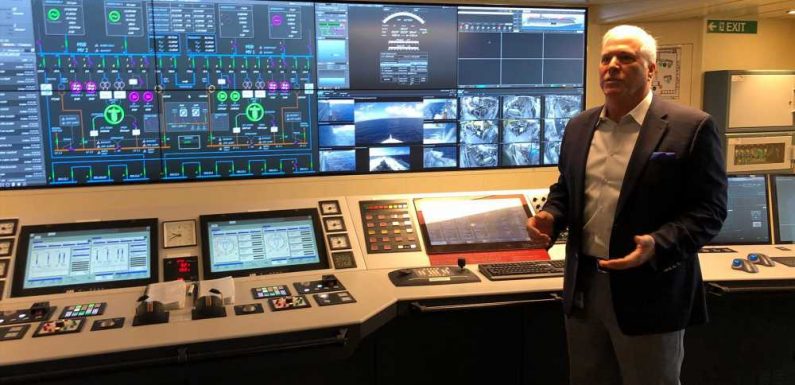
ABOARD THE MARDI GRAS — Every Carnival Cruise Line ship since the original Mardi Gras in 1972 has sported a distinctive T-shaped funnel, and the newest ship in the fleet, the 2020 version of Mardi Gras, is no different.
But in addition to the giant red-and-blue T-funnel, the Mardi Gras has three smaller stacks. Painted white with a simple red stripe, these stacks conceal vents for the three liquid natural gas tanks that make this ship different from most others.
Although there are a few cruise ships in Europe powered by liquefied natural gas (LNG), Mardi Gras is the first ship to bring the innovative technology to North America. Cruise executives see a future in LNG as a cheaper and cleaner alternative to the traditional heavy diesel fuel that has powered passenger ships for the past 100 years.
Clean-burning natural gas offers big advantages over traditional fuel, especially now that cruise ships have had to drastically reduce the amount of sulfur emitted in their exhaust. Natural gas, which is mostly methane, produces no sulfur dioxide when burned and much lower levels of nitrous oxide and particulates, two other pollutants from fuel oil combustion.
In addition, the supply of natural gas in North America is abundant, making it cheaper to buy on an energy-equivalent basis than fuel oil.
Scary enough. That’s Tom Stieghorst’s verdict on the first roller coaster at sea.
Natural gas requires some special handling, however. It has to be liquified to be a practical fuel, and that requires keeping it at a temperature of minus-259 degrees Fahrenheit. The three tanks built into the depths of the Mardi Gras hold the fuel at that temperature until it is ready to be burned in the ship’s engines.
“Those tanks are insulated like you wouldn’t believe,” said Rich Pruitt, Carnival’s vice president of environmental operations, who was aboard the Mardi Gras on its July pre-inaugural cruise from Port Canaveral.
Pruitt said the tanks keep the gas so cold that it actually has to go through a pre-ignition warming process to be burned. A very small amount of gas boils off naturally and must be vented to avoid a pressure buildup, which is the purpose of the three extra stacks.
Tom Stieghorst reviewed the new dining options on Mardi Gras, including Shaquille O’Neal’s restaurant and its enormous chicken biscuit for breakfast.
The quartet of school bus-sized 16-cylinder engines that burn the natural gas are basically the same as those that burn diesel fuel. One small difference, Pruitt said, is that natural gas won’t combust under pressure in an engine cylinder, so a small amount of diesel fuel is injected with each piston stroke to spark combustion.
Once combusted, the natural gas produces no visible emissions, none of the belching black smoke that many diesel engines generate when first started up. “There’s effectively nothing, there’s no smoke, there’s no mist. This is what LNG provides for us,” Pruitt said.
Source: Read Full Article












